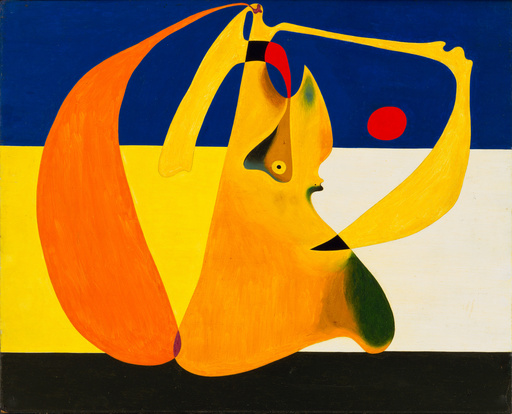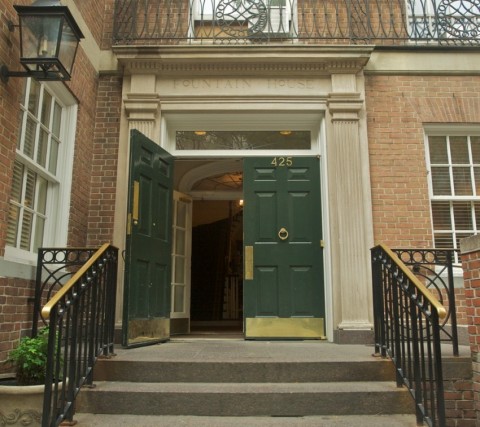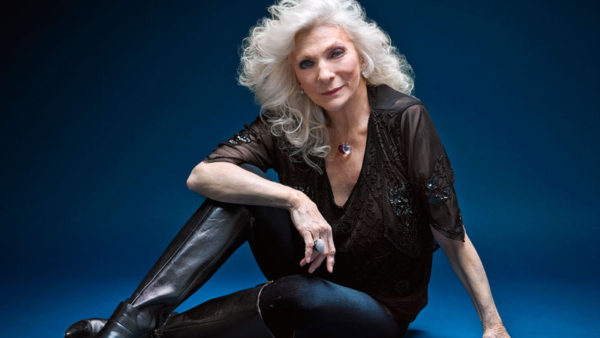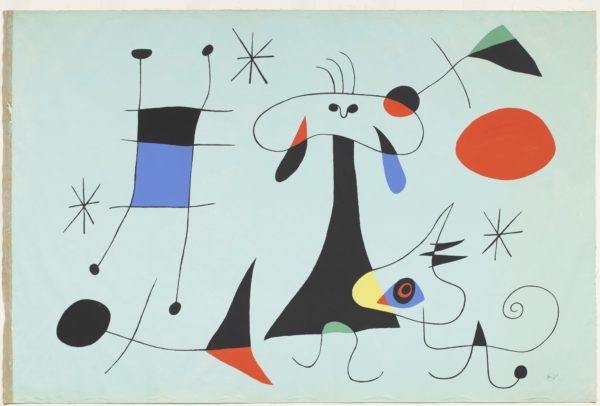
07 May TIO NYC: Anxiety & An Antidote
May is Mental Health Awareness Month, but Fountain House is on the job every day. The nonprofit is dedicated to the recovery of men and women with serious mental illness by providing opportunities for their members to live, work, and learn, while contributing their talents through a community of mutual support. We were privileged to attend Fountain House’s sold-out annual fundraising symposium and luncheon titled “The Anxiety Epidemic-New Research, New Insights.” Following the event, we strolled over to the Museum of Modern Art to dive into the uplifting “Joan Miro: The Birth of the World.” The euphoric exhibition is an antidote to anxiety: take one and smile big.

Anxiety disorders afflict 40 million people in the United States. It is the most common group of mental illnesses in our country and on the agenda at Fountain House’s 16th annual symposium and luncheon, which celebrated the retirement of Fountain House president of 27 years, Kenneth J. Dudek.

But, as Medical News Today explains, anxiety is not necessarily a bad thing. In fact the condition is aligned with our survival as a species.
“When an individual faces potentially harmful or worrying triggers, feelings of anxiety are not only normal but necessary for survival.
“Since the earliest days of humanity, the approach of predators and incoming danger sets off alarms in the body and allows evasive action. These alarms become noticeable in the form of a raised heartbeat, sweating, and increased sensitivity to surroundings.
“The danger causes a rush of adrenalin, a hormone and chemical messenger in the brain, which in turn triggers these anxious reactions in a process called the ‘fight-or-flight’ response. This prepares humans to physically confront or flee any potential threats to safety.
“For many people, running from larger animals and imminent danger is a less pressing concern than it would have been for early humans. Anxieties now revolve around work, money, family life, health, and other crucial issues that demand a person’s attention without necessarily requiring the ‘fight-or-flight’ reaction.”
“The nervous feeling before an important life event or during a difficult situation is a natural echo of the original ‘fight-or-flight’ reaction. It can still be essential to survival – anxiety about being hit by a car when crossing the street, for example, means that a person will instinctively look both ways to avoid danger….”
However when the duration or severity of an anxious feeling is out of proportion to the original trigger, or stressor and a person continually experiences intrusive thoughts or concerns and the physical symptoms such as high blood pressure and nausea that goes with it, that individual has an anxiety disorder.
Sanjay J. Mathew, M.D. is the Marjorie Bintliff Johnson and Raleigh White Johnson, Jr. Vice Chair for Research and Professor in the Menninger Department of Psychiatry & Behavioral Sciences at Baylor College of Medicine. He is also a staff psychiatrist at the Michael E. Debakey VA Medical Center (MEDVAMC) in Houston, Texas. Mathew graduated from Dartmouth College and Baylor College of Medicine, and trained in psychiatry at Columbia University and the New York State Psychiatric Institute, where he also completed a NIH-funded research fellowship in affective and anxiety disorders.
Dr. Mathew was the symposium’s opener, explaining that one out of five people in the US experiences anxiety disorder and that it can strike even the very young.
He defined the five major types of anxiety disorders:
Generalized Anxiety Disorder …
Obsessive-Compulsive Disorder (OCD) …
Panic Disorder …
Post-Traumatic Stress Disorder (PTSD) …
Social Phobia (or Social Anxiety Disorder) …
Dr, Mahew closed by talking about hope in the form of the drug ketamine. Originally approved by the US Food and Drug Administration (FDA) as an anesthetic, ketamine is increasingly being used to treat mood disorders, such as treatment-resistant depression, anxiety disorders, and post-traumatic stress disorder (PTSD). Several studies have also found it to be effective for treating suicidal ideation.
Dr. Anne-Marie Albano, PhD, ABBP, followed with the latest research in the field , starting with her own experiences as a girl who experienced anxiety when forced to move from Staten Island to Florida.
“Research is me search,” she explained, adding the sobering fact that anxiety disorder can and often does start early, as early as age three or four.
Dr. Albano is a professor of medical psychology, a clinical psychologist and board certified in clinical child and adolescent psychology. She serves as Director of the Columbia University Clinic for Anxiety and Related Disorders. When she asked for a show of hands from the room if anyone had ever experienced anxiety or had a family member who experienced anxiety, to a person everyone raised a hand.
And you could hear a pin drop around the tables – along with the expressions on the faces of countless mothers – when Dr. Albano, a renowned expert on childhood anxiety, suggested that making a child dependent by attempting to fix everything in their lives is the wrong way to go. Exposure or helping young people be in and deal with their issues in context is.
Scott Stossel, national editor of The Atlantic and author of New York Times bestseller “My Age of Anxiety: Fear, Hope Dread, and the Search for Peace of Mind,” wrapped the lecture.
Stossel talked about how he tried therapy, drugs, and booze, about how he abandoned dates; walked out of exams; and had breakdowns during job interviews, plane flights, train trips, and car rides; even simply walking down the street. On ordinary days, he said, doing ordinary things like reading a book, lying in bed, talking on the phone, sitting in a meeting, playing tennis, he talked about having been stricken by a pervasive sense of existential dread, been beset by nausea, vertigo, shaking, and other physical symptoms, adding that in those instances he was sometimes convinced that death, or worse, was tapping him on the shoulder.
Stossel ended by saying that he has ultimately come to terms with the nation’s most common mental illness – although he still has a pre-talk regimen that includes drugs before any public speaking engagement like the Fountain House event.
And yes, while anxiety disorder per se is not a killer, all three speakers agreed that the challenge is a portal to substance abuse and depression, with Dr. Mathew explaining that the suicides of 22 veterans a day is correlated with anxiety that has morphed into something much worse and much more difficult to treat. Because the good news is anxiety disorder itself is treatable.
Honored guest Judy Collins, a Telluride regular, closed the program.

Courtesy image.
Yes, that Judy Collins, who is now 79.
In the 1960s, Collins evoked both the idealism and steely determination of a generation united against social and environmental injustices. Now, after 50+ albums over five decades, the crystalline voice has lost none of its legendary clarity.
But things were not always a bed of roses for Sweet Judy Blue Eyes.
Released by Tarcher/Penguin in 2003, Collin’s “Sanity and Grace: A Journey of Suicide, Survival and Strength,” is a deeply moving memoir focusing on the death of her only son and the healing process following the tragedy.
For her memoir, “Sweet Judy Blue Eyes: My Life in Music,” she reached deeply inside and, with unflinching candor recalled her turbulent childhood in an alcoholic family, her extraordinary rise to fame, her romance with Stephen Stills, her epic victories over depression and alcoholism, and her redemption through embracing a healthy and stable lifestyle and finding true love with Louis Nelson, her partner of 30 years.
Released in 2017, “Cravings” is a no-holds barred account of the artist’s harrowing struggle with compulsive overeating and the journey that led to a solution.
Judy Collins remains esteemed for her imaginative interpretations of traditional and contemporary folk standards and her own poetically poignant original compositions. Her stunning rendition of Joni Mitchell’s “Both Sides Now” from her landmark 1967 album, Wildflowers, was entered into the Grammy Hall of Fame.
Her a cappella riff on “Both Sides Now” at the end of her address brought the house down – and raised the stock price of Kleenex.
Miró at MOMA:

In his own Surrealism-inspired exploration, Miró invented a new kind of pictorial space, twinning his signature biomorphic and geometric forms with poetry. He juxtaposed his carefully rendered objects, those marks from his interior, with much more recognizable forms, all rendered in boldly expressive colors.
The artist’s use of interior emotion expressed through automatic drawing to drive his abstractions would become a major influence on the Abstract Expressionists. And, although Miró has been associated with early Surrealism and did have a major impact on the AbExers as well as Color Field painters, he remains one of modern art’s greatest mavericks with an unmistakable visual lexicon easily identifiable as his own.
The Museum of Modern Art (MoMA) has dug deep into its extensive holdings of pieces by Joan Miró for a show that demonstrates how one major work can be a turning point in an artist’s career. For the Spanish artist, it was the aptly titled “The Birth of the World,” a large-scale painting Miró made in 1925.

In 1920, Miró experienced what he called the transformative “jolt” from his first trip to Paris, where he was introduced to avant-garde society and began absorbing the influences of other emerging painters and writers.
Critical to Miró’s artistic development over the next four years were his encounters with Surrealist poets and painters on subsequent trips to Paris, including the movement’s co-founder André Breton. Absorbing their fascination with dreams, fantasy and the unconscious, he began churning out a new body of work.
The exhibition at MOMA includes paintings, works on paper, collages, prints, illustrated books and ceramics.


Writing for The New York Times, long-time critic Roberta Smith reviews the joyous show:
Periodically the Museum of Modern Art orchestrates what I call a Miró Immersion, one of those experiences that can make you an art lover for life or, if that’s already the case, prompt you to renew your vows. It’s an exhibition, of course, and it’s devoted to the Spanish modernist Joan Miró (1893-1983). But thanks to MoMA’s extraordinary holdings in Miró’s work and its curatorial familiarity with them, these shows sometimes achieve a pervasive, extra-visual intensity.
This happens in “Joan Miró: Birth of the World,” especially in an astounding first gallery which is alive with Miró’s inventiveness, natural talent and playful malice. The show brings together 60 paintings, sculptures, drawings, prints and illustrated books made mostly from 1920 to the early 1950s, all but a handful from the museum’s collection. The focus is “The Birth of the World,” a prescient painting that might even qualify as a “lost masterpiece.” Painted by Miró in 1925, it was largely unknown, except to a handful of artists and other art-world denizens until 1968, when it was included in “Dada, Surrealism and Their Heritage,” MoMA’s comprehensive survey of the two movements that introduced anti-materialism and Freudian explorations of the unconscious into 20th-century art.
The artist André Masson once likened this large (8-by-6½ feet) canvas in its radicalness to Picasso’s “Les Demoiselles d’Avignon” of 1907. It is still startling that the two are only 18 years apart. But while “Demoiselles” enabled Cubism, which spread through Europe and beyond in a matter of years, “The Birth of the World” went almost immediately underground; it was too far ahead of its time to have an immediate effect. Its thin veils, splatters and rivulets of gray, ocher and blue wash and horizon-free space would find little echo outside of Miró’s work until around 1950, with the pouring techniques of Jackson Pollock and Helen Frankenthaler…


Sorry, the comment form is closed at this time.